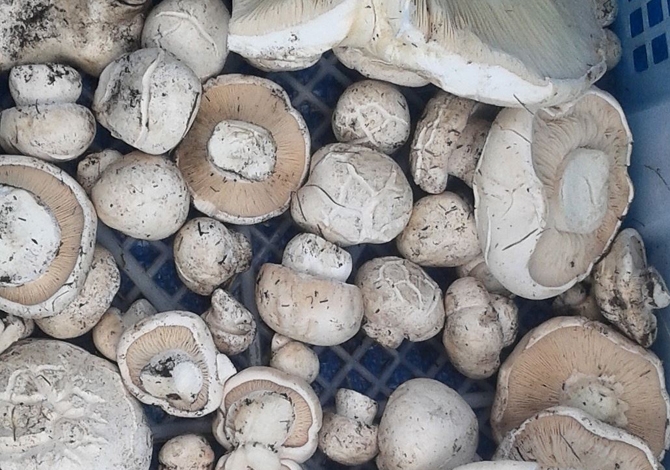
More mushrooms!
(SCOTT MORAN / iNFOnews.ca)
May 04, 2017 - 3:18 PM
OPINION
On a sunny mid-spring day in the early 2000s we were driving north along an old highway somewhere in the southern interior (out of respect to the locals I will leave the exact location undisclosed). It was myself, my father and oldest uncle. We were in our amateur years as mushroom hunters but we were, and still are, very enthusiastic and easily excited.
As we drove down the narrow single lane road we suddenly noticed the field had a scattered group of people moving slowly and deliberately across the field with knives and white plastic grocery bags. We had never imagined that there might be anything worth picking in the wideopen rolling hills grasslands. The foragers happened to belong to the local first nation. They told us about the legendary mushroom they were after — the lightning mushroom. This mysterious fungi is said to grow where the lightning strikes the hills. The lightning mushroom will grow in long streaks or circles, and the ground will be scarred in and barren where they appear.
I believed this legend to be true for many years, but as I’ve slowly moved from an amateur mushroom hunter as a child to a professional year-round forager of all types of plants and mushrooms I have developed my own theory. I will also enjoy telling the tale of the lightning mushroom, but now I have a second name to use when dealing with customers in my business.
My best day of mushroom harvesting, by weight, happened in the UK, in one of the most bland and dense suburban regions I’ve ever seen. In Britain, the St. George’s Mushrooms appear around the saints holiday of George, April 23. They have the same pattern of growing in circles and streaks. I have also since learned that these mushrooms grow in northern Spain and Italy, and possibly across Europe and Asia. The latin biological name is calocybe gambosa.
I believe the mushrooms mycelium (or root fibers) change the nutrients in the soil and stop the grass from growing, creating the scars that could be thought of as a lightning strikes aftermath. The notorious fairy ring mushrooms in my front lawn have the same effect on the lawn, and there has definitely been no lightning there.
The St. George’s mushroom, or lightning mushroom, or whatever you wish to call them, has a very strong flavour. It pairs very well with seafood, soy sauce, and grilled vegetables. They will be found in grasslands at an elevation between 500 and 1000 meters anywhere in the southern interior of BC, all the way north to the Chilcotin and possibly beyond. As the season progresses worms will begin to appear in the large or exposed specimens, but for the next week or two they will be pristine. If you do not have any luck foraging there is a chance they will make an appearance at restaurants in the central Okanagan or on Saturday’s in May and June at the Kelowna Farmers and Crafters Market, all picked by yours truly. Happy hunting!
Check out my Facebook page Everything Wild to stay up to date on our local foraging scene.
— Scott Moran is a local forager discovering his own path to food freedom.
We welcome your comments and opinions on our stories but play nice. We won't censor or delete comments unless they contain off-topic statements or links, unnecessary vulgarity, false facts, spam or obviously fake profiles. If you have any concerns about what you see in comments, email the editor.
News from © iNFOnews, 2017